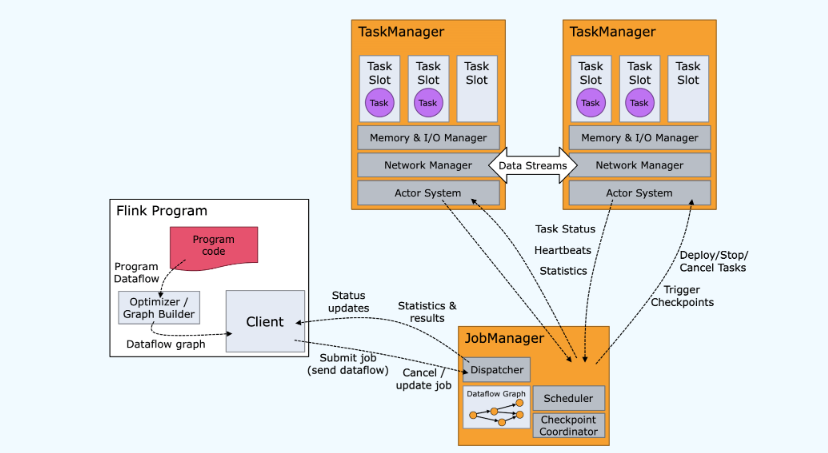The Significance of Real-Time Data Analytics
Real-time data analytics holds immense significance for businesses across industries. By analyzing real-time data, organizations can gain valuable insights into customer behavior, market trends, and operational efficiency. For instance, consider the case of an e-commerce giant using real-time analytics to analyze customer browsing patterns and purchasing behavior. The company can instantly process and analyze data streams to personalize real-time product recommendations, increasing customer engagement and sales conversion rates.
Real-time analytics enables organizations to stay ahead of market trends and capitalize on emerging opportunities. Suppose a financial services firm monitors real-time market data to identify potential investment opportunities or mitigate risks. By swiftly analyzing market trends and fluctuations, the firm can make timely decisions to optimize investment portfolios and maximize returns, gaining a competitive edge in the fast-paced world of finance.
Key Business Requirements Driving Real-Time Analytics
- Enhanced Customer Experience: Real-time analytics enables organizations to gain real-time insights into customer behavior, preferences, and sentiment. By leveraging this data, businesses can tailor products, services, and interactions to meet individual customer needs and preferences.
- Optimized Operations: By continuously monitoring and analyzing operational data streams, organizations can identify bottlenecks, inefficiencies, and opportunities for improvement in real-time. Whether streamlining supply chain processes, optimizing production workflows, or managing inventory levels, real-time analytics empowers businesses to make data-driven decisions that lead to operational excellence and cost savings.
- Enhanced Decision-Making: Real-time analytics provides decision-makers instant access to relevant and accurate data insights. This enables them to respond quickly to market conditions, emerging trends, and customer needs.
- Improved Risk Management: Whether detecting fraudulent transactions, identifying cybersecurity threats, or monitoring market volatility, real-time analytics empowers businesses to proactively manage risks and protect their assets, reputation, and stakeholders' interests.
How to Choose the Correct Technology for Real-Time Analytics?
Choosing the right technology for real-time analytics is crucial for the success of any organization's data-driven initiatives. Here are some essential factors to consider when evaluating technology solutions for real-time data analytics:
- Scalability: Ensure that the technology can handle large volumes of data and scale seamlessly as your data needs grow. Look for solutions that offer horizontal scalability, allowing you to add resources or nodes to the system without sacrificing performance.
- Performance: Assess the performance metrics of the technology, including latency, throughput, and processing speed. Opt for solutions that offer low latency and high throughput to enable real-time analysis of data streams.
- Flexibility and Ease of Use: Choose a flexible and accessible technology that allows data engineers and analysts to quickly develop and deploy real-time analytics applications.
- Integration Capabilities: Consider the technology's integration capabilities with existing systems and data sources. Ensure compatibility with your data infrastructure, including databases, data warehouses, and streaming platforms, to facilitate seamless data integration and interoperability.
- Advanced Analytics Features: Evaluate the technology's support for advanced analytics features, such as machine learning, predictive modeling, and complex event processing. Choose a solution that offers built-in support for these capabilities to enable sophisticated analysis and insights generation.
- Fault Tolerance and Reliability: Look for solutions with built-in fault tolerance, data replication, and automatic failover capabilities to minimize downtime and data loss.
- Community and Support: Choose a technology with a vibrant community and robust support ecosystem to facilitate troubleshooting, knowledge sharing, and collaboration.
What is Apache Flink?
Apache Flink is a robust open-source framework for real-time data processing and analytics. It stands out as a leading solution in the realm of stream processing. Apache Flink allows data streams to be analyzed as they are generated, enabling organizations to derive actionable insights in real-time.
At its core, Apache Flink provides a unified platform for batch and stream processing, offering a seamless experience for analyzing data in motion and at rest. It features a distributed architecture that allows for horizontal scalability, enabling organizations to process large volumes of data across clusters of machines with high throughput and low latency.
The Architecture of Apache Flink
The following illustration depicts the components of Flink and the runtime flow within Flink. Program code or SQL queries are structured into an operator graph, which the client submits to a job manager. The job manager decomposes the job into operators, executed as tasks on nodes operated by the task.

Apache Flink's architecture is based on the principles of stream processing, where data is continuously ingested, processed, and analyzed in real-time. It consists of several key components, including:
- Data Sources: Apache Flink supports various data sources, including Kafka, HDFS, and relational databases, allowing organizations to ingest data from diverse sources.
- Operators: Operators perform transformations and computations on the data streams, enabling organizations to apply business logic and analytical algorithms to the incoming data.
- State Management: Apache Flink supports stateful processing, allowing computations to maintain and update state across events, enabling complex analytics and aggregations.
- Sinks: Sinks output the processed data to external storage or downstream systems, enabling organizations to store and analyze the results of their computations.
How does Apache Flink Differ from Other Methods?
Unlike traditional batch processing frameworks, such as Apache Spark or Hadoop MapReduce, Apache Flink is optimized for real-time stream processing. It offers low-latency processing and support for event time semantics, allowing organizations to handle out-of-order events and window-based computations with precision and accuracy.
Apache Flink's support for stateful processing and event-driven architectures also sets it apart from other stream processing frameworks. It enables organizations to build sophisticated real-time applications, such as fraud detection systems, recommendation engines, and IoT analytics platforms, with ease and efficiency.
By leveraging the core principles and features of Apache Flink, organizations can harness the power of real-time analytics to drive business value, gain competitive advantage, and unlock new opportunities for innovation and growth.
Key Benefits of Amazon Managed Service for Apache Flink
Amazon Managed Service for Apache Flink is a service by Amazon that reduces the complexity of building, managing, and integrating Apache Flink applications with other AWS services. As a fully managed service, it empowers businesses to build and run high-performance, fault-tolerant applications without the complexity of managing infrastructure.
Here are some key benefits of Amazon Managed Service for Apache Flink:
- Hassle-free Setup: Amazon Managed Services for Apache Flink eliminates the burden of infrastructure management, allowing organizations to focus on building and running applications without administrative overhead.
- Fast Processing: Amazon Managed Services for Apache Flink empowers you to process massive volumes of data with impressive throughput. It is capable of handling gigabytes of data per second. Its distributed architecture ensures efficient data processing, enabling you to derive insights from large datasets in real-time.
- Built-in Fault Tolerance: Amazon Managed Service for Apache Flink supports Multi-AZ deployments, ensuring high availability and durability for your applications. It provides built-in fault tolerance mechanisms, such as checkpointing and automatic failover, to ensure continuous operation and data integrity during failures or disruptions.
- Integration with AWS Services: The service seamlessly integrates with other AWS services, facilitating data ingestion, storage, and analysis across the AWS ecosystem.
- Cost-effective Pricing: With flexible pricing options and pay-as-you-go billing, you can optimize costs and maximize the value of their real-time analytics investments, paying only for the resources they consume.
Learn More with Industry Experts
To further explore the world of real-time data processing with Apache Flink, we invite you to join the upcoming online webinar hosted by Mactores. This leading company provides data analytics and digital transformation solutions. Industry Experts like Bal Heroor, CEO and Principal Consultant at Mactores, and Deepthi Mohan, Principal Product Manager for Managed Services for Apache Flink, will provide valuable insights into the business benefits of real-time analytics, best practices for building robust real-time applications with Apache Flink, and strategies for operationalizing these applications with DataOps best practices.
You will also have the opportunity to gain insights from case studies and success stories of real-world applications and participate in an interactive Q&A session with expert panelists. Don't miss this unique opportunity to deepen your understanding of real-time data processing with Apache Flink and accelerate your journey toward data-driven innovation.


